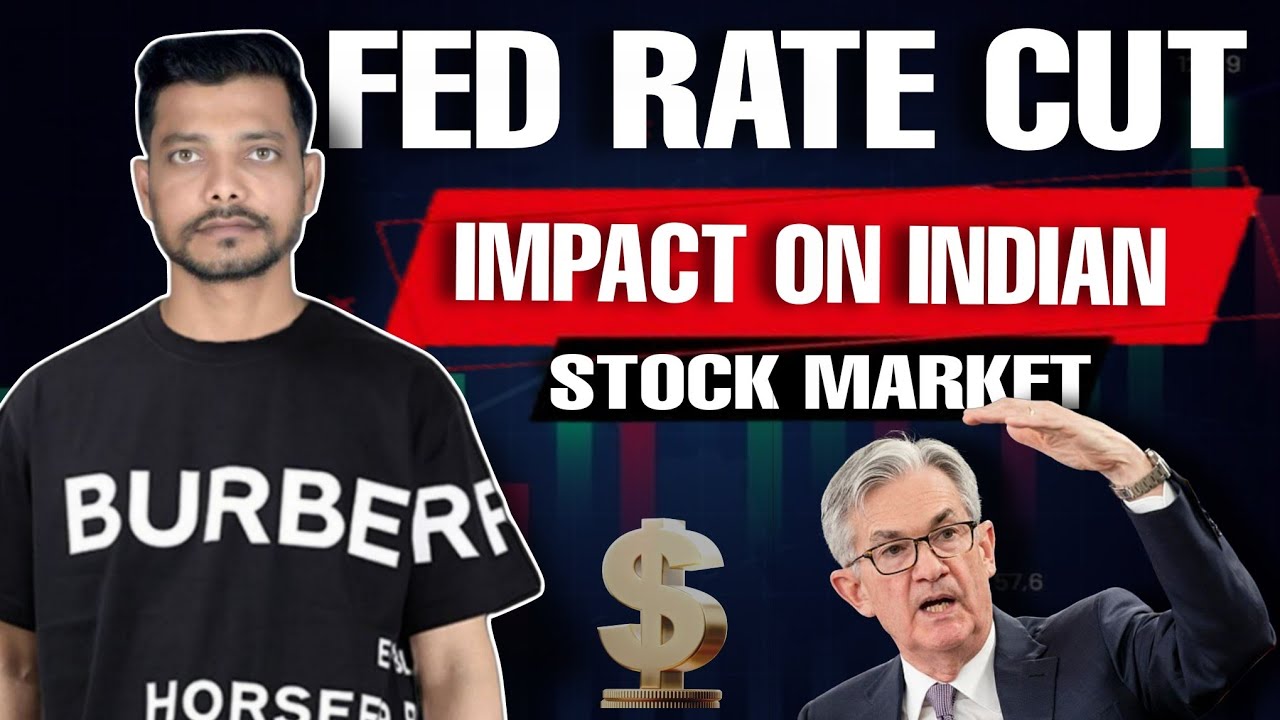Japan, US and Indian Market CRASH!! - Cause of BIG Concern? - Rahul Jain Analysis #marketcrash
Summary
TLDRIn this video, Rahul Jen, a full-time investor, discusses the crash of the Japanese and US stock markets and its impact on India. He explains the 'carry trade' concept, where investors borrow at low Japanese interest rates to invest in higher-yielding US assets. The recent increase in Japan's interest rate has led to a reversal of this trade, causing market falls. Rahul also addresses US recession fears, unemployment rates, and manufacturing slowdowns. Despite global market turbulence, he advises Indian investors to remain calm, continue SIPs, and consider this a buying opportunity, emphasizing long-term investment strategies.
Takeaways
- 📉 The Japanese market has experienced a significant crash, with the Nikkei 225 falling by around 12.40% in 5 days and 23% in a month, which is considered a very large drop in a short period.
- 💡 The concept of 'carry trade' is introduced, where investors borrow at low interest rates in one country (Japan) and invest in another (US) to earn a higher return.
- 🗼 Japan's interest rates have been extremely low, even negative at times, due to low inflation and deflationary periods, making it an ideal candidate for carry trade.
- 💻 The recent increase in Japan's interest rate from 0.14% to 0.25% has sparked fear among investors, leading to a reversal of the carry trade and contributing to the market crash.
- 📈 The US market is also experiencing a downturn, with the NASDAQ falling by 2.5% in one day and 9% in a month, due to fears of a recession and various economic indicators.
- 🔎 Key economic indicators such as unemployment rate and PMI suggest a slowdown in the US economy, contributing to the market decline.
- 🌐 Global events, including potential conflicts between Iran and Israel, can impact the US market and investor sentiment.
- 🇮🇳 Despite the issues in Japan and the US, the Indian market's fall is more influenced by foreign portfolio investors (FPIs) and their reactions to global events.
- 📊 The Indian market's valuation, as indicated by the Nifty PE ratio, is currently at a sweet spot, neither overvalued nor undervalued, suggesting a fair market value.
- 💼 The speaker advises against panic selling and emphasizes the importance of a long-term investment strategy, especially for SIP investors.
- 🚀 For those with cash reserves, the current market situation is viewed as an opportunity for strategic buying into long-term assets, with a focus on maintaining some cash for potential market fluctuations.
Q & A
Why is the Japanese market experiencing a significant crash?
-The crash is attributed to the reversal of the 'carry trade' strategy, where investors borrowed at low interest rates in Japan and invested in higher-yielding markets like the US. The recent increase in Japanese interest rates has disrupted this strategy, causing investors to withdraw funds and sell off assets.
What is the 'carry trade' concept mentioned in the video?
-The 'carry trade' is a strategy where investors borrow money at a low-interest rate in one country and invest it in another country where the expected return is higher. This creates a profit from the interest rate differential without risking the investor's own capital.
How has the Bank of Japan's interest rate policy contributed to the carry trade?
-The Bank of Japan has maintained very low interest rates, even negative rates at times, making it an attractive place to borrow money. This low borrowing cost facilitated the carry trade, where investors borrowed in Japan and invested in higher-yielding markets.
What factors have led to the depreciation of the Japanese Yen against the US Dollar?
-The depreciation of the Japanese Yen is due to a combination of factors, including Japan's low-interest rate policy, which has made the Yen less attractive as an investment, and broader economic factors that have weakened the currency over the last five years.
Why is the US market also experiencing a downturn?
-The US market downturn is linked to fears of a recession, indicated by rising unemployment rates and a slowdown in manufacturing activities. Additionally, delayed rate cuts by the US Federal Reserve and geopolitical tensions, such as the situation between Iran and Israel, have contributed to market uncertainty.
What is the Purchasing Managers' Index (PMI), and why is it significant for the US market?
-The PMI is an index that measures the performance of the manufacturing sector. A PMI below 50 indicates contraction in manufacturing activities. The recent fall in the US PMI to 46.8 suggests a slowdown in the US economy, contributing to market concerns.
How has the Indian stock market been affected by the global market downturn?
-Although India's economy is distinct from Japan and the US, the Indian stock market has been impacted due to foreign portfolio investors (FPIs) selling off equities out of fear and moving towards safe havens like US bonds or gold.
What is the current state of the Nifty PE ratio, and what does it indicate about the Indian market's valuation?
-The Nifty PE ratio is currently around 23, which is considered fairly valued, neither overvalued nor undervalued. This suggests that the Indian market is in a 'sweet spot' and not at an extreme valuation level that would cause concern.
What advice does the video provide for investors regarding their portfolios during this market downturn?
-The video advises against panic selling and market timing. It suggests continuing systematic investment plans (SIPs) and maintaining a long-term investment perspective. The speaker also personally plans to buy more assets, dividing cash into chunks to invest as market opportunities arise.
What is the speaker's view on the long-term prospects of the Indian economy and its companies?
-The speaker is optimistic about the long-term prospects of the Indian economy and its companies. They believe that despite short-term market fluctuations, the Indian market will continue to rise in the long run, driven by strong economic fundamentals and the performance of good companies.
Outlines

このセクションは有料ユーザー限定です。 アクセスするには、アップグレードをお願いします。
今すぐアップグレードMindmap

このセクションは有料ユーザー限定です。 アクセスするには、アップグレードをお願いします。
今すぐアップグレードKeywords

このセクションは有料ユーザー限定です。 アクセスするには、アップグレードをお願いします。
今すぐアップグレードHighlights

このセクションは有料ユーザー限定です。 アクセスするには、アップグレードをお願いします。
今すぐアップグレードTranscripts

このセクションは有料ユーザー限定です。 アクセスするには、アップグレードをお願いします。
今すぐアップグレード関連動画をさらに表示

3 Stocks with HUGE Short Term Tailwinds - Time to buy? Rahul Jain Analysis #stockstowatch

2 Nasdaq 100 ETFs to Watch out for Long Term – The Ultimate Dollar Hedge Strategy! | Rahul Jain

Massive (Up to 70%) Crash in 3 Popular Stocks - Time to ADD or AVOID? Rahul Jain Analysis

Stock Market Crash, But Why? | Sell Stocks or Buy More?

Fed Rate Cut Impact On Stock Market

What's Behind The Stock Market Drama?
5.0 / 5 (0 votes)
